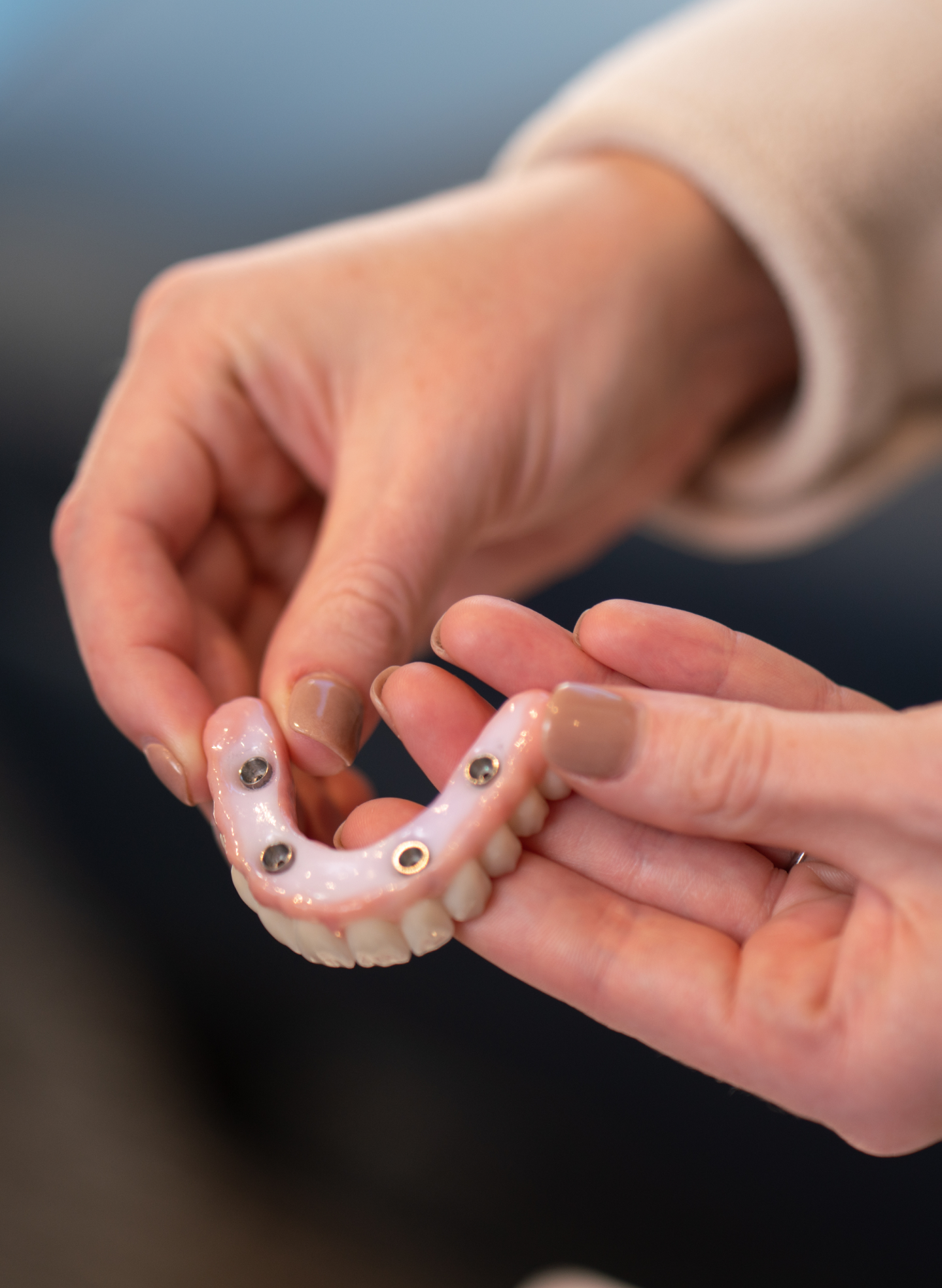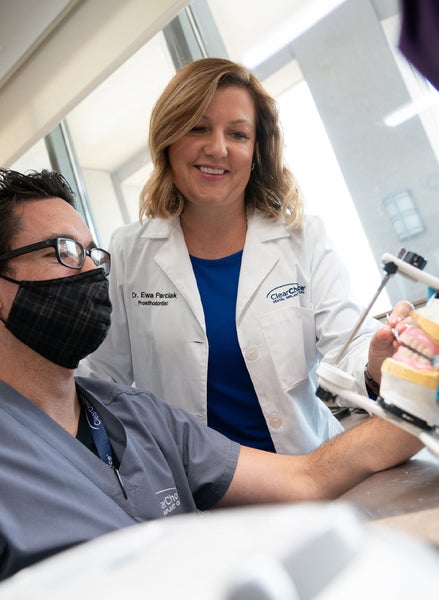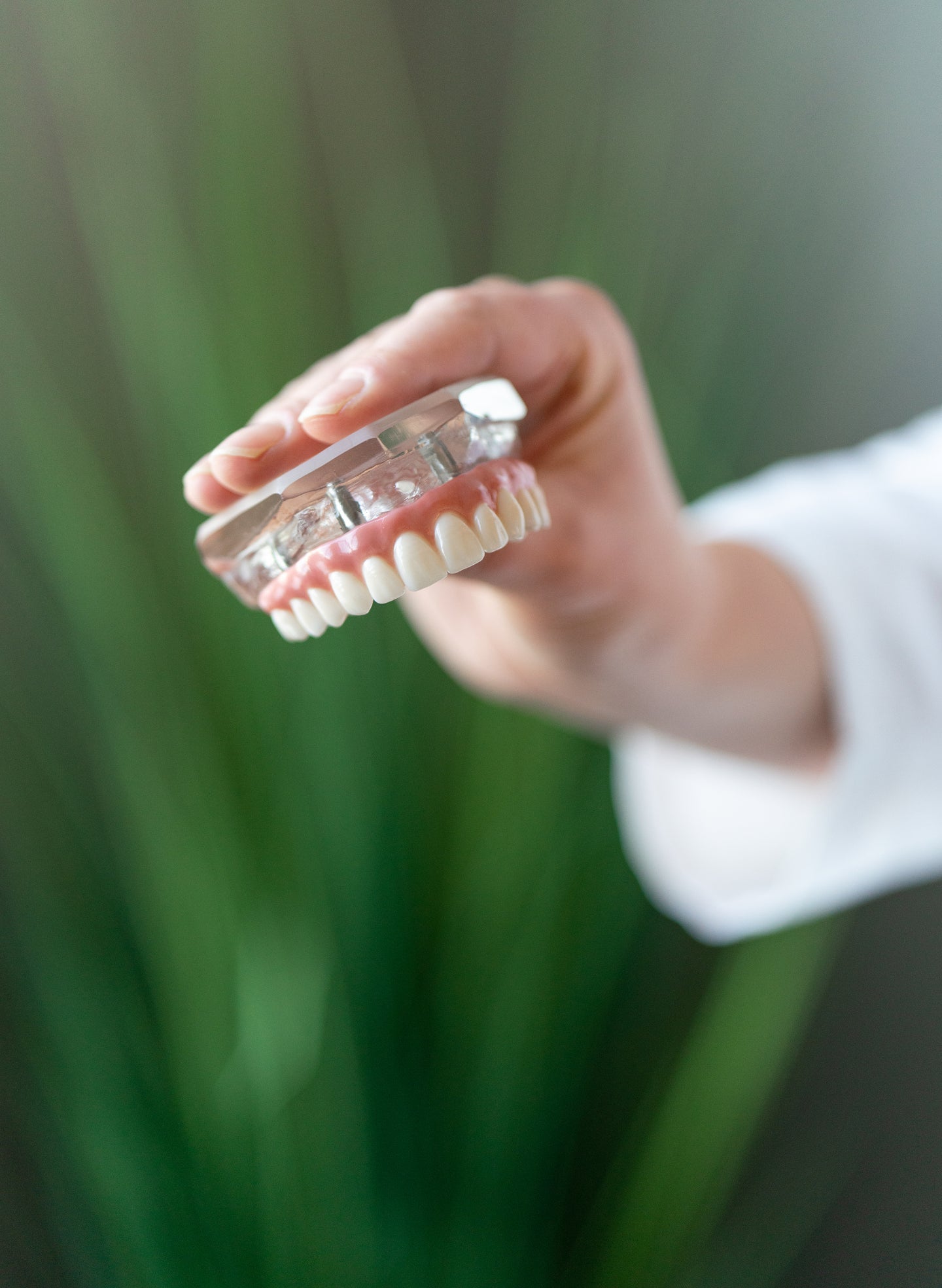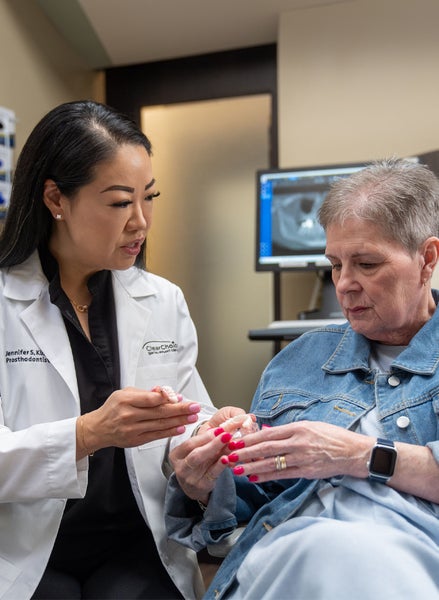Last updated 01.24.2025
Endosteal dental implants
Discover endosteal dental implants, their types, and the procedure to effectively restore your smile.

Endosteal implants, commonly referred to as dental implants, are a restorative dental procedure that offer the look and function of your natural teeth. Thanks to modern dentistry advancements, they are quite common and have a high success rate. If you’re a good candidate, they can help you regain the ability to eat and speak, restoring your confidence and your smile. Let’s dive deeper into how endosteal dental implants work, the procedure, and aftercare so you can decide if they’re right for you.
What are endosteal dental implants?
Endosteal implants, or endosteal dental implants, are prostheses placed directly into the jawbone. The implant itself is a small screw, often titanium, that fuses to the jawbone. This offers a stable and secure base to place a crown or other device. As a result, endosteal implants offer long-term strength and durability.
The endosteal dental implant procedure
Here is a broad overview of the endosteal dental implant process:
Initial consultation: The dentist evaluates your mouth, examines your oral health, takes X-rays, and examines your jawbone strength to determine your implant candidacy. They also answer questions and recommend any preparatory procedures.
Preparatory procedures: The dentist performs any procedures needed to prepare for the implant, such as tooth extraction or bone grafts (adding bone material to the jawbone to increase strength).
Implant placement: On the day of your dental implant surgery, the dentist will place your implant.
Healing/osseointegration: The surgical site heals within one to two weeks. Meanwhile, the implant fuses to the jawbone over three to six months during a process called osseointegration.
Get impressions or scans: You’ll get impressions or scans taken so that your dentist can create a prosthesis that fits precisely.
Restoration attachment: The dentist secures a cap or crown on your implant, completing the procedure.
Endosteal implant aftercare
Once the dentist places the implant, you’ll wait a few months as it fuses to your jawbone. Here are some tips to minimize your risk of complications or issues during this time:
Follow all your dentist’s instructions: Take prescribed medication, visit for any follow-up appointments, and follow all other dentist instructions.
Manage symptoms: Pain medication and ice packs can help with discomfort for the first few days.
Rest: Avoid strenuous activity the first few days after placing your endosteal implants.
Avoid hard and sticky foods: These can damage or irritate the site, facilitate bacterial growth, and increase the risk of infection. Stick to soft and liquid foods, and avoid chewing with the implant.
Keep up your oral hygiene: Brush twice daily with a soft-bristled brush and fluoride toothpaste, and floss and rinse once daily to keep your mouth and the area clean.
Watch for anything unusual: Persistent or worsening swelling, pain, or bleeding may signal an issue. Discharge, a bad taste, or bad breath could also indicate an issue. Contact your dentist immediately if you experience these.
Are endosteal dental implants right for me?
Dentists typically evaluate each patient’s history and examine their health carefully to determine whether they are suitable candidates for an endosteal implant (commonly known as a dental implant).
Strong, fully grown jawbone: Endosteal implants require a strong, fully grown jawbone. They may not work for children or adults who cannot strengthen their jawbone with bone grafts.
Good oral health: Healthy teeth, gums, and jawbone reduce the risk of complications and maximize the chance of implant success.
Nonsmoker/willing to quit: Smoking overall can weaken the jawbone and harm oral health. It could also damage or loosen the implant during healing/osseointegration.
Post-op commitment: It is crucial for proper implant fusion and healing that patients are willing to follow the dentist’s instructions and maintain good oral hygiene.
Good overall health: Good overall health ensures smooth healing. Diabetes, autoimmune conditions, and similar
health conditions may impact the body’s healing capabilities after implant placement.
Get started on your endosteal implant journey
Endosteal implants don’t just help you regain the ability to eat and speak. They almost perfectly mimic natural teeth, letting you confidently flash your smile. If you’re considering replacing missing teeth with dental implants, schedule a consultation with ClearChoice or find your local ClearChoice Dental Implant Center.
Endosteal dental implants FAQs
How long does it take for an endosteal dental implant to heal?
The surgical wound typically heals over one to two weeks. However, the implant typically takes 2 to 4 months to fuse to your jawbone and create a sturdy base.
How much do endosteal implants cost?
Costs can vary by many factors, such as:
The number of implants
Whether preparatory procedures are needed
The implant materials used
Your insurance coverage
Speak with your dentist and insurance company to better estimate your potential endosteal dental implant costs.
What is the success rate of endosteal implants?
Dental implants have an extremely high success rate thanks to advanced surgical techniques and modern technology. Although the endosteal implant procedure is quite common, complications are rare. Even if complications occur, visiting the dentist early can prevent significant issues and save the implant. Following the dentist’s instructions, maintaining good overall health, resting adequately, and scheduling necessary follow-ups can help you avoid complications.
What does an endosteal implant look like?
An endosteal implant is a small screw, often made of titanium. It goes directly to the jawbone. The dentist then attached a connecting piece to it. This connecting piece supports the crown, mimicking a natural tooth’s look and function.



